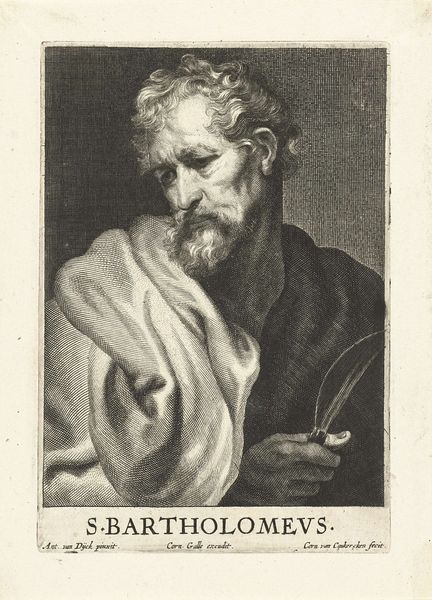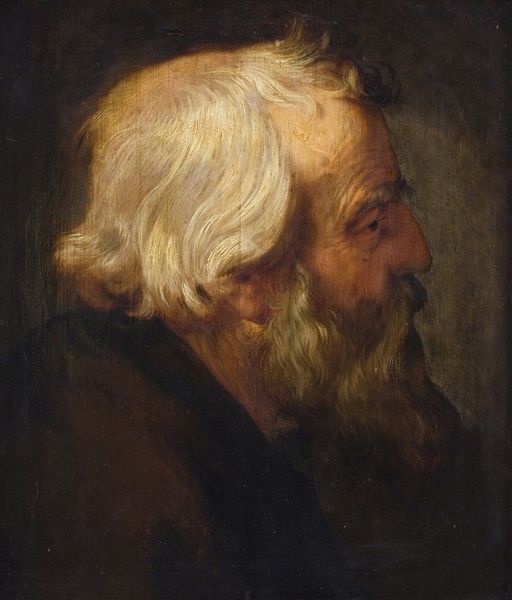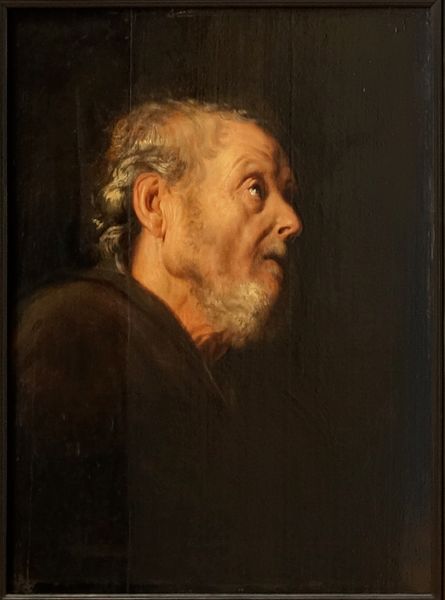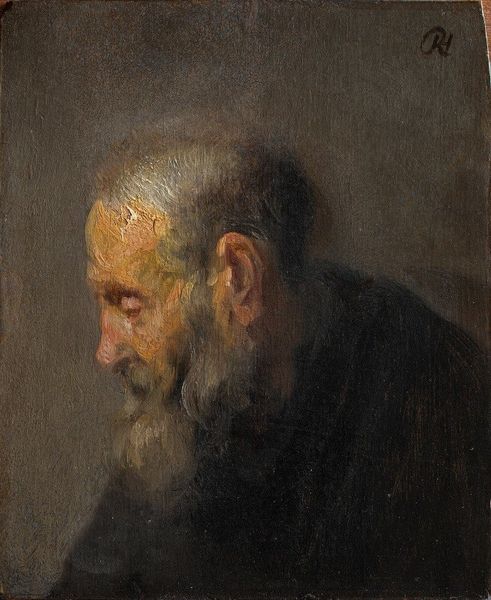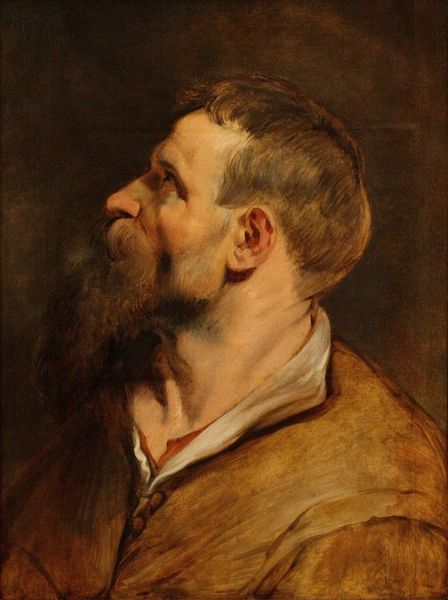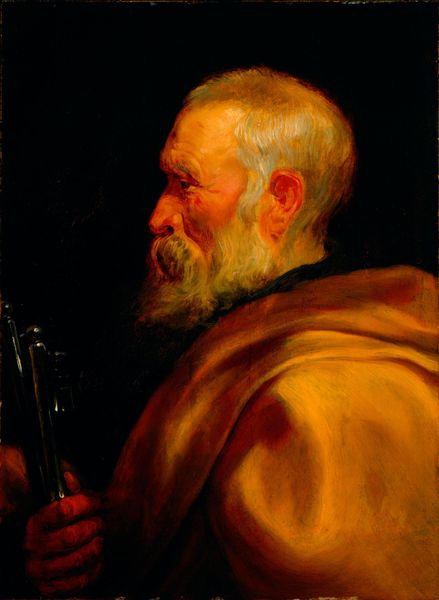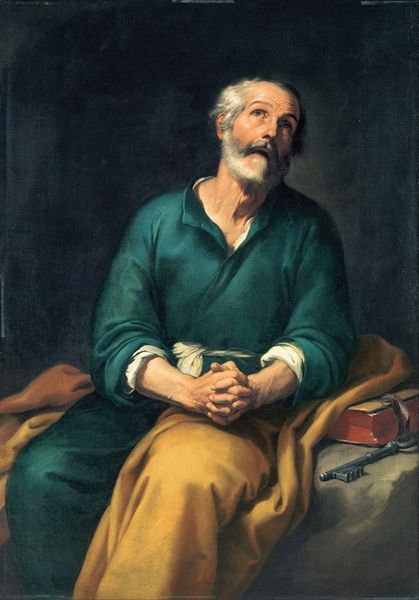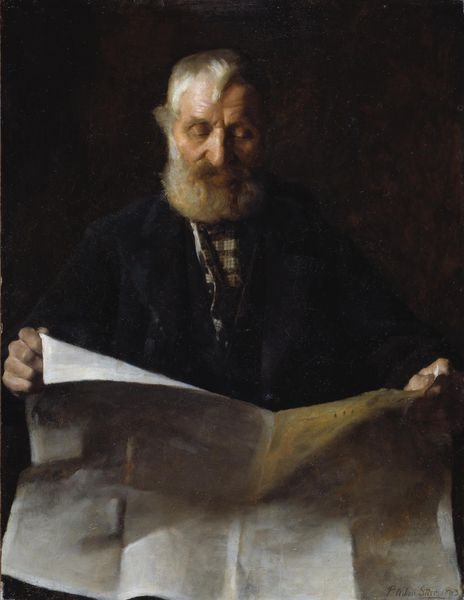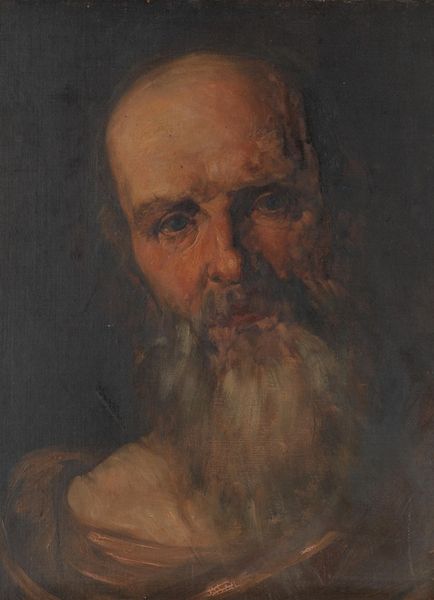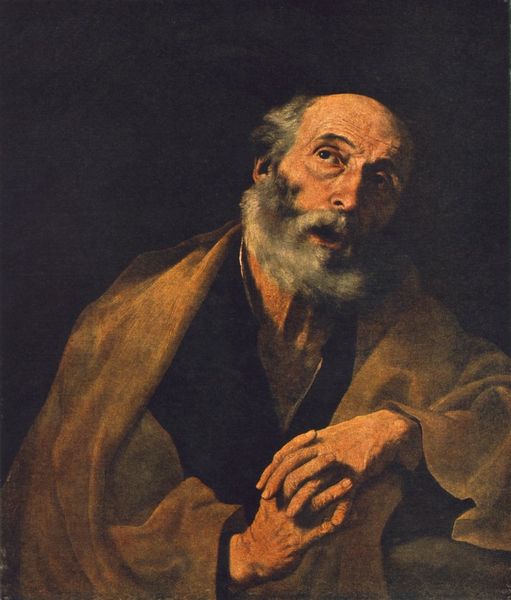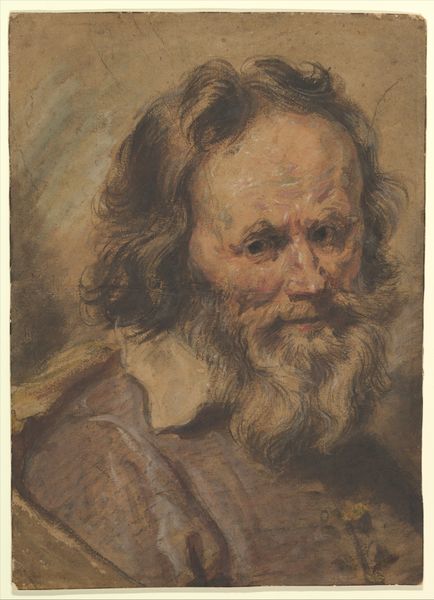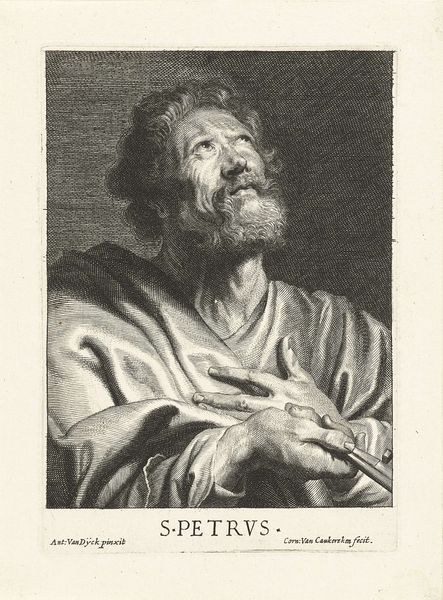
painting, oil-paint
#
portrait
#
baroque
#
portrait
#
painting
#
oil-paint
#
figuration
#
history-painting
Dimensions: 63.5 x 48.5 cm
Copyright: Public domain
Editor: Here we have Van Dyck's oil painting, Saint Bartholomew. It feels very somber to me, and my eye is drawn to the knife he's holding. What do you make of this work? Curator: The knife, undoubtedly, is central. It isn't simply an object, but an attribute. Van Dyck, steeped in the visual language of his time, employs it to identify Bartholomew, whose martyrdom is traditionally depicted as being flayed alive. Consider how such potent imagery functions, linking visual representation to collective memory of religious stories. Editor: So, the knife is a symbol representing his eventual suffering? Curator: Precisely. It’s not merely a blade; it’s a signifier. Notice also the downward gaze, the shadowed face; they contribute to the mood of contemplative suffering. This echoes artistic conventions that were used to depict saints, creating continuity through iconic visuals. Editor: Is that why the backdrop is so dark, almost to the point of being indistinct? Curator: Partly. The darkness heightens the contrast, throwing Bartholomew into stark relief and isolating him. Also, the Baroque masters frequently employed tenebrism to theatrical effect. Editor: So much conveyed through these established symbols and composition techniques. Curator: Indeed. Van Dyck manipulates symbolic objects and visual cues to evoke emotion and connect with established cultural understanding. The painting serves not just as a portrait but as an invitation to contemplate faith, suffering, and legacy. Editor: Thank you; now I see beyond the initial impression of melancholy to this layered visual history.
Comments
No comments
Be the first to comment and join the conversation on the ultimate creative platform.
